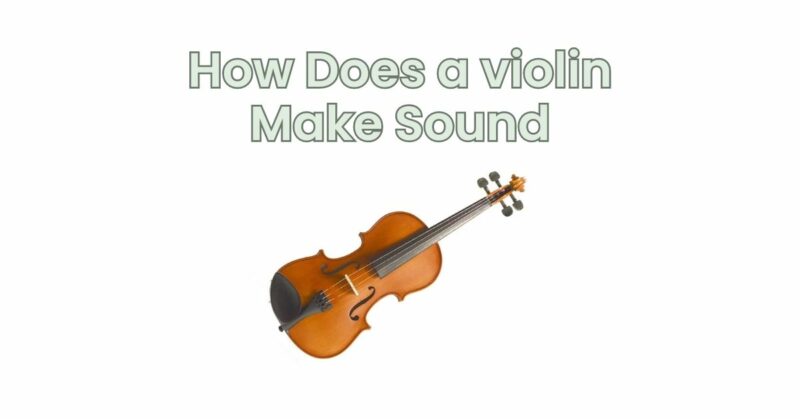The violin, with its rich and resonant sound, has been captivating audiences for centuries. But have you ever wondered how this elegant instrument produces such enchanting music? The answer lies in the fascinating realm of physics. In this article, we will explore the physics behind sound production in a violin, shedding light on the intricate interactions between strings, air, and the instrument’s body that bring forth its melodic beauty.
The Vibrating Strings: At the heart of a violin’s sound production are its four strings. When a violinist draws the bow across a string or plucks it with their fingers, the string is set into motion, vibrating rapidly back and forth. This vibration generates sound waves that travel through the air, eventually reaching our ears.
Pitch and Frequency: The pitch of a sound produced by a vibrating string depends on two factors: tension and length. By adjusting the tension of a string using the tuning pegs, violinists can modify its pitch. Additionally, the length of the vibrating portion of the string, determined by finger placement on the fingerboard, also affects the pitch. Higher pitches are produced when the vibrating length is shortened.
Resonance and the Soundbox: The sound produced by the vibrating strings alone would be faint and lack resonance. However, the violin’s soundbox, comprising the top plate (soundboard) and the back plate, plays a vital role in amplifying and shaping the sound. When the strings vibrate, they transfer energy to the soundboard via the bridge, causing it to resonate sympathetically. This resonance enhances the volume and quality of the sound produced.
The Soundpost and Bass Bar: Two critical components inside the violin further contribute to its sound production: the soundpost and the bass bar. The soundpost is a small wooden dowel that sits inside the instrument, connecting the top and back plates. It transfers vibrations from the soundboard to the back plate, enhancing its resonance. The bass bar, a long, thin wooden strip running beneath the soundboard, helps distribute vibrations and contributes to tonal balance and projection.
Harmonics and Overtones: The vibrating strings produce not only the fundamental pitch but also a complex series of harmonics and overtones. These additional frequencies, occurring at integer multiples of the fundamental frequency, give the violin its rich and colorful timbre. The unique combination of harmonics and overtones contributes to the violin’s unique sonic identity.
Bow Technique and Rosin: The bow, consisting of horsehair attached to a wooden or carbon-fiber stick, plays a crucial role in sound production. When drawn across the strings, the bow creates friction, causing the strings to vibrate. The application of rosin, a sticky substance, to the bow hair enhances the grip on the strings, allowing for sustained and controlled vibrations, and influencing the quality of sound produced.
Room Acoustics and Audience: The environment in which the violin is played also influences its sound production. The acoustics of the room, including its size, shape, and materials, can affect how sound waves interact and resonate within the space. Additionally, the presence of an audience absorbs and reflects sound, contributing to the overall sound experience.
Conclusion: The violin’s ability to produce its captivating sound is a result of intricate physical interactions. From the vibrating strings and the resonance of the soundbox to the role of the bow and the influence of room acoustics, the physics behind sound production in a violin is a mesmerizing symphony of scientific principles. Understanding these mechanisms not only enhances our appreciation of the instrument’s magic but also serves as a testament to the harmonious marriage of art and science in the world of music.


